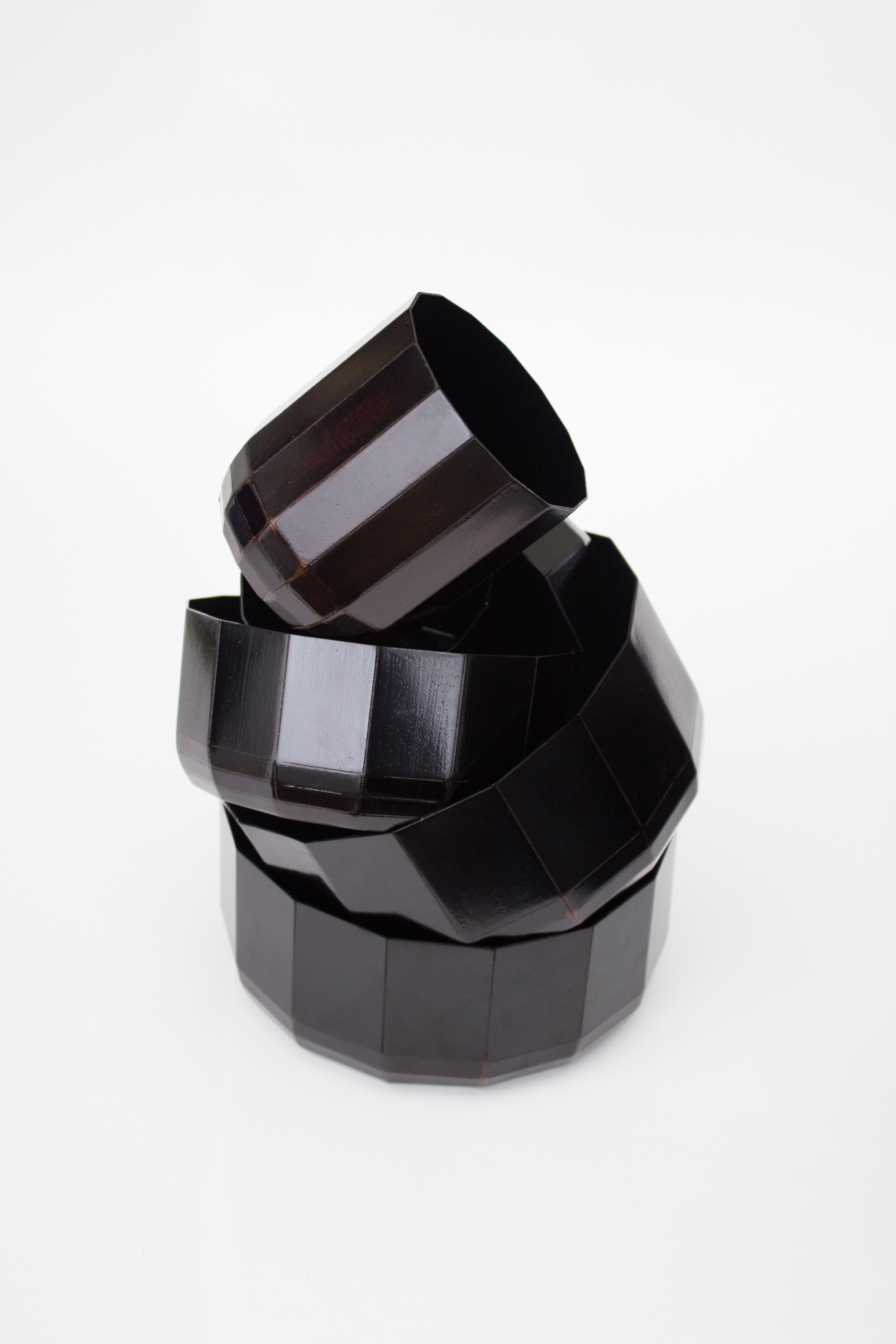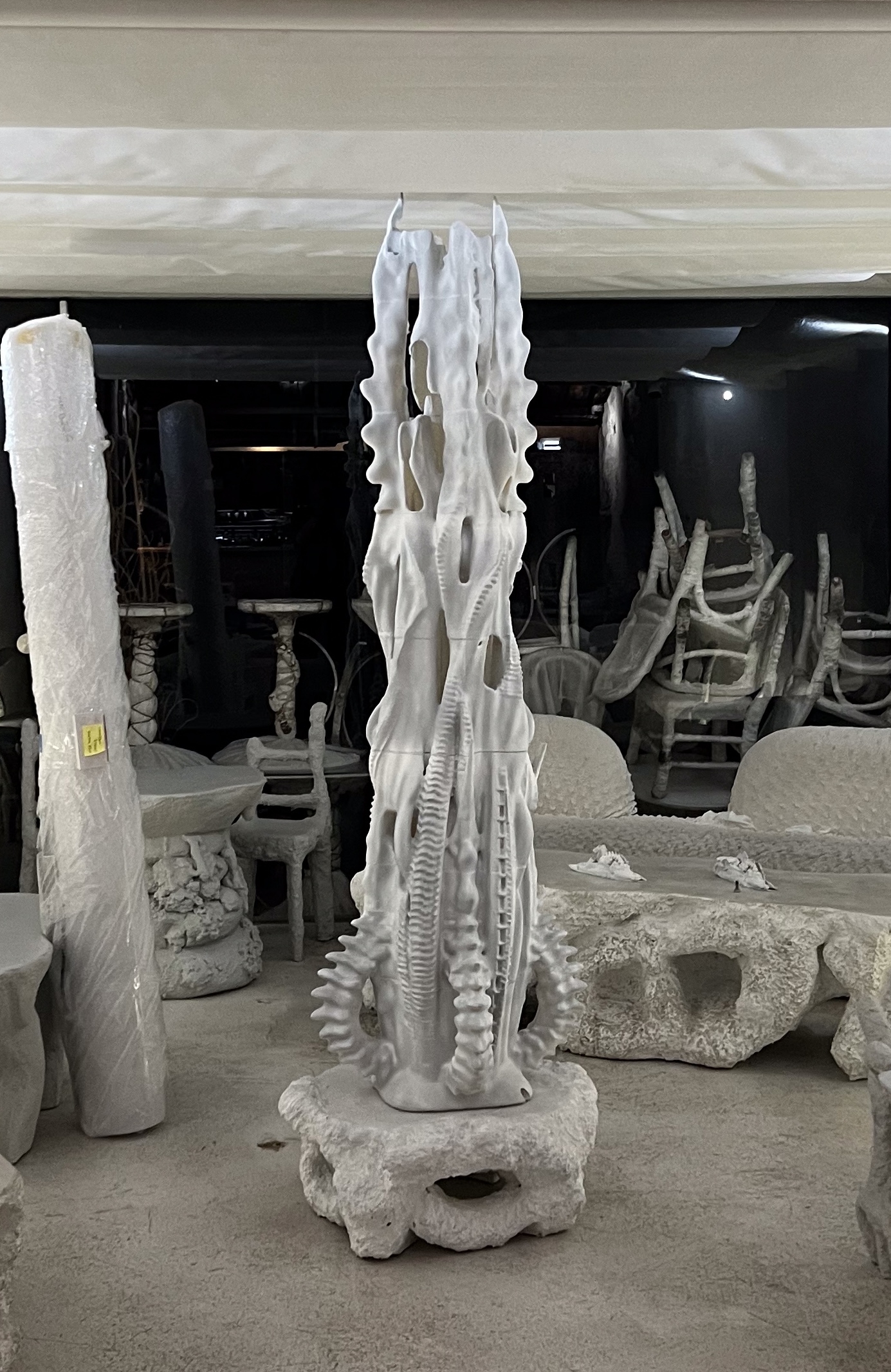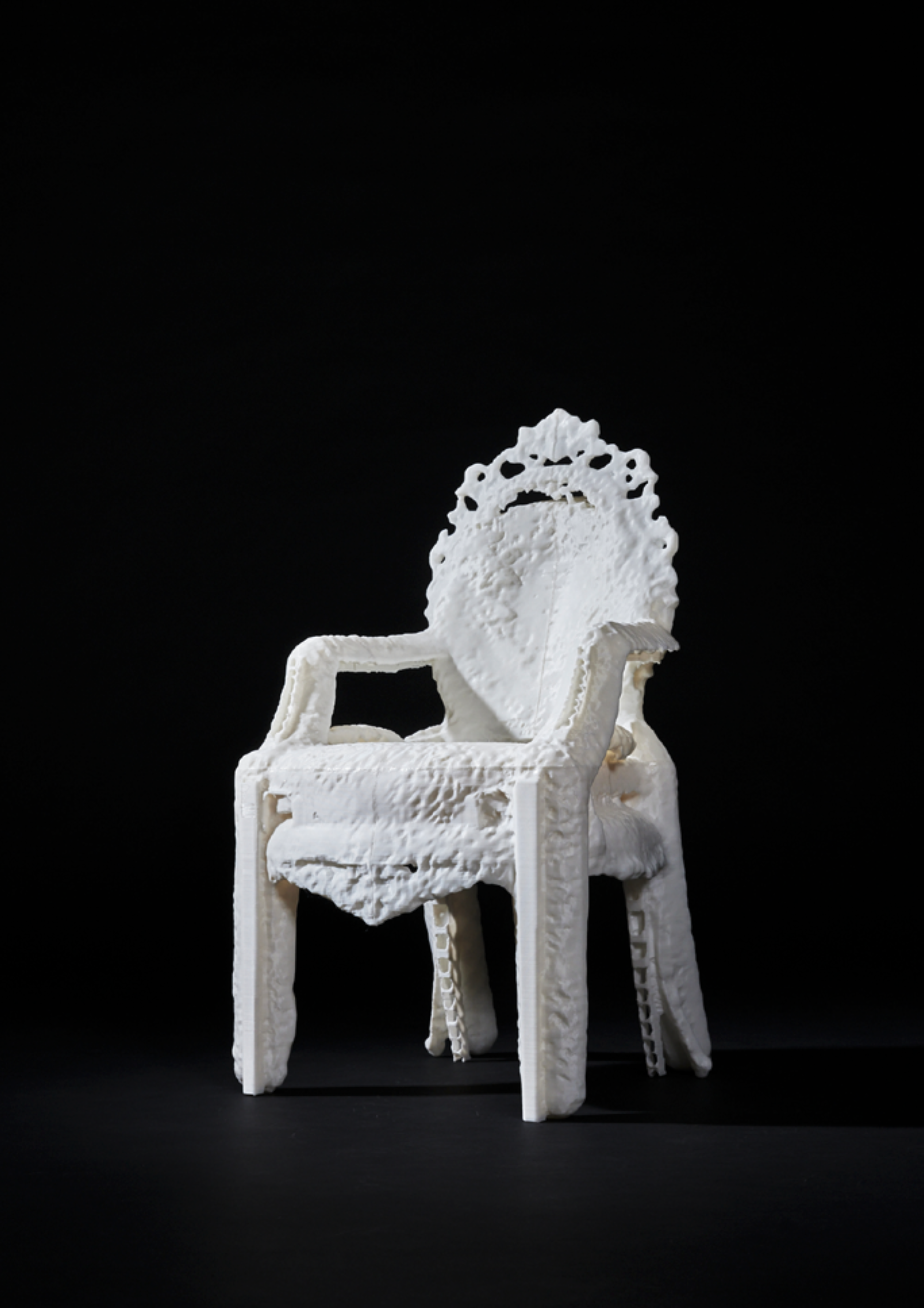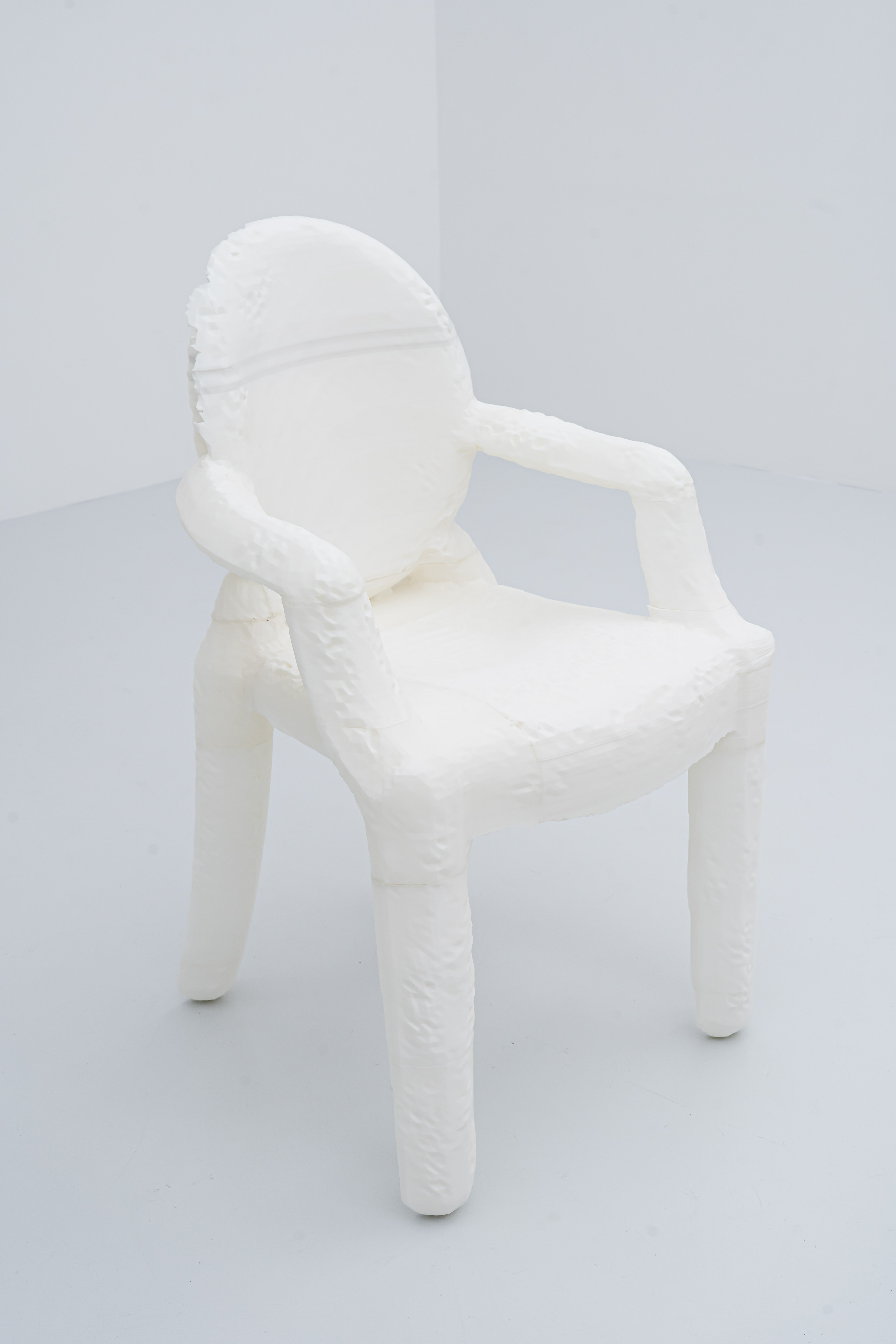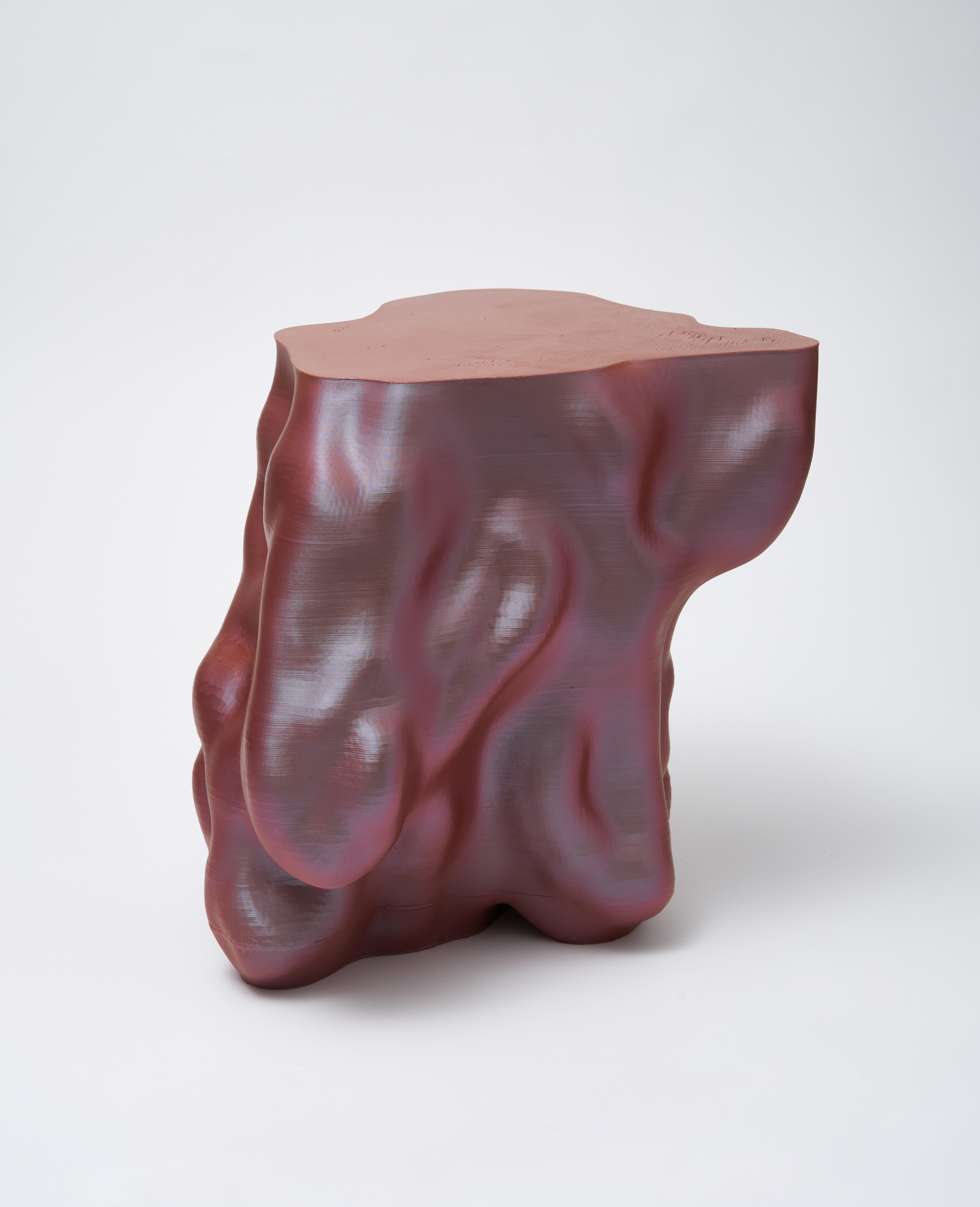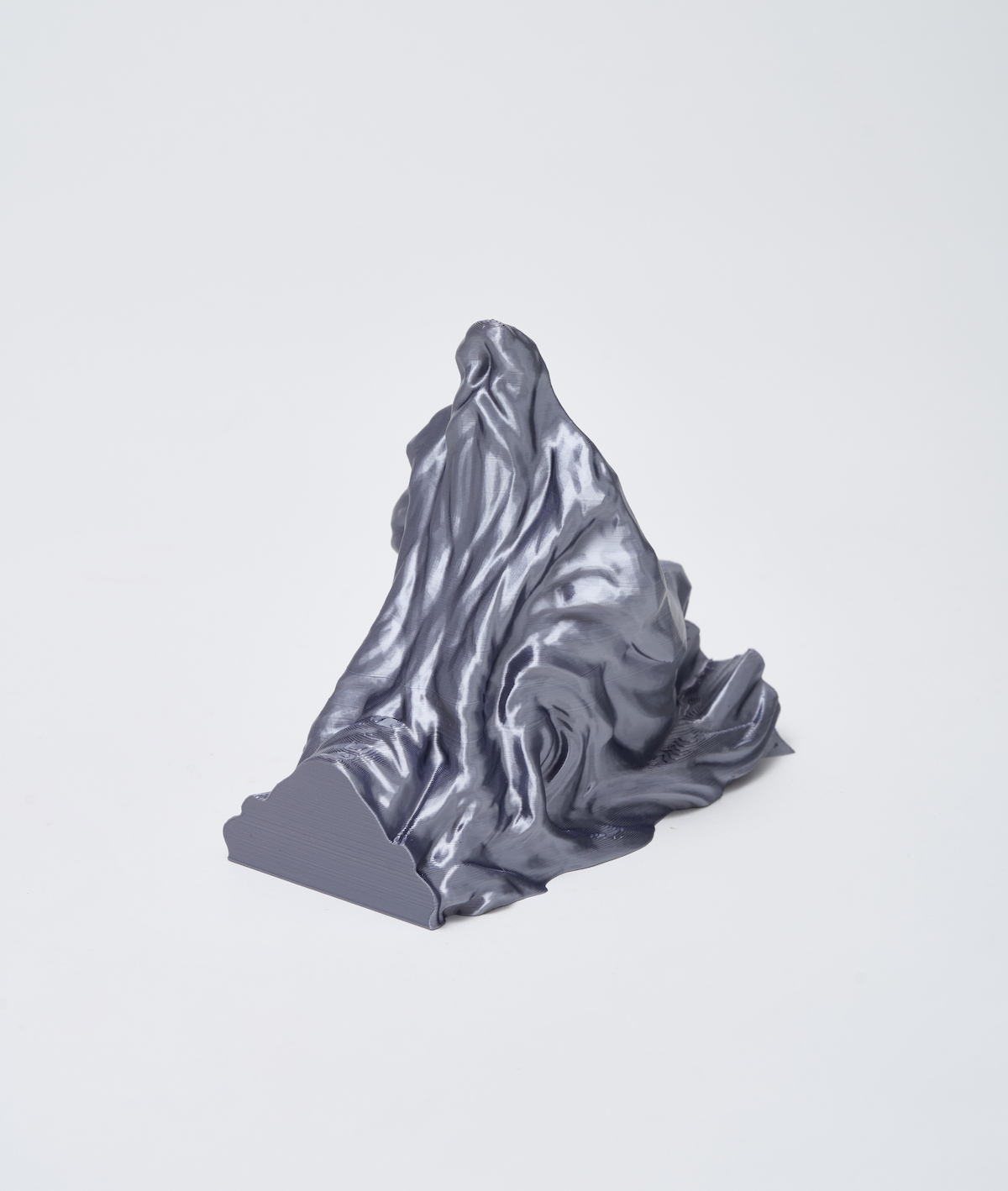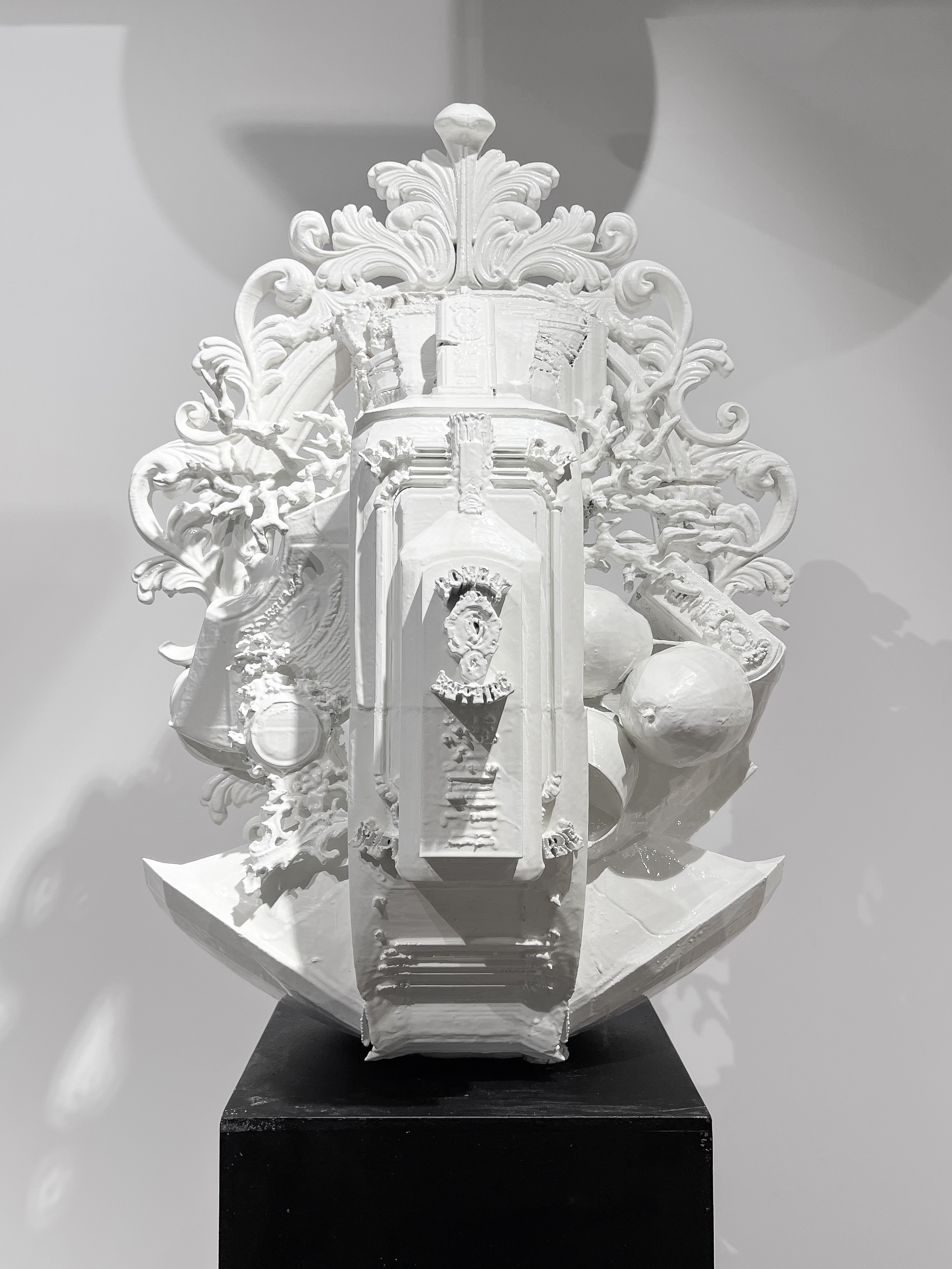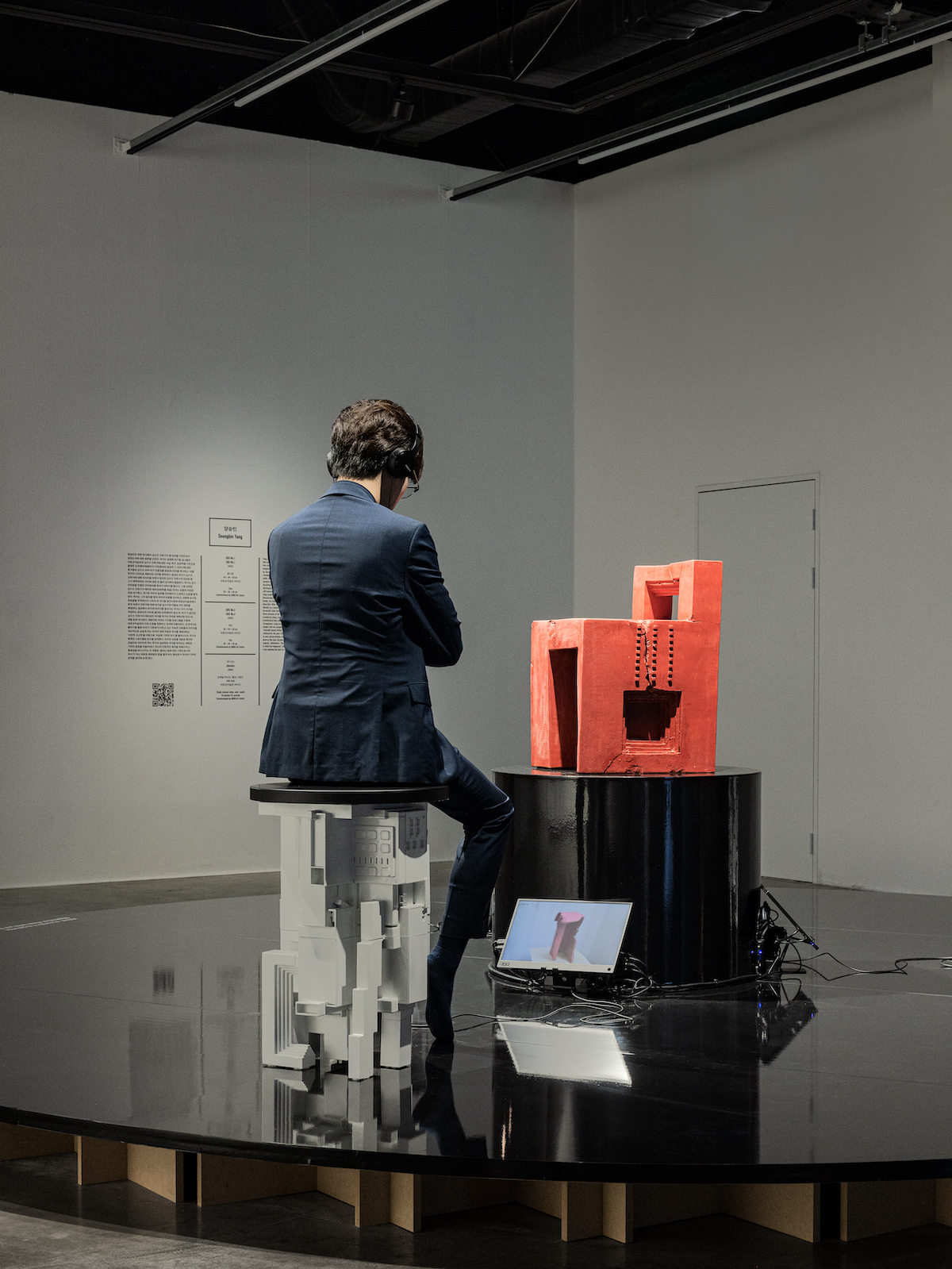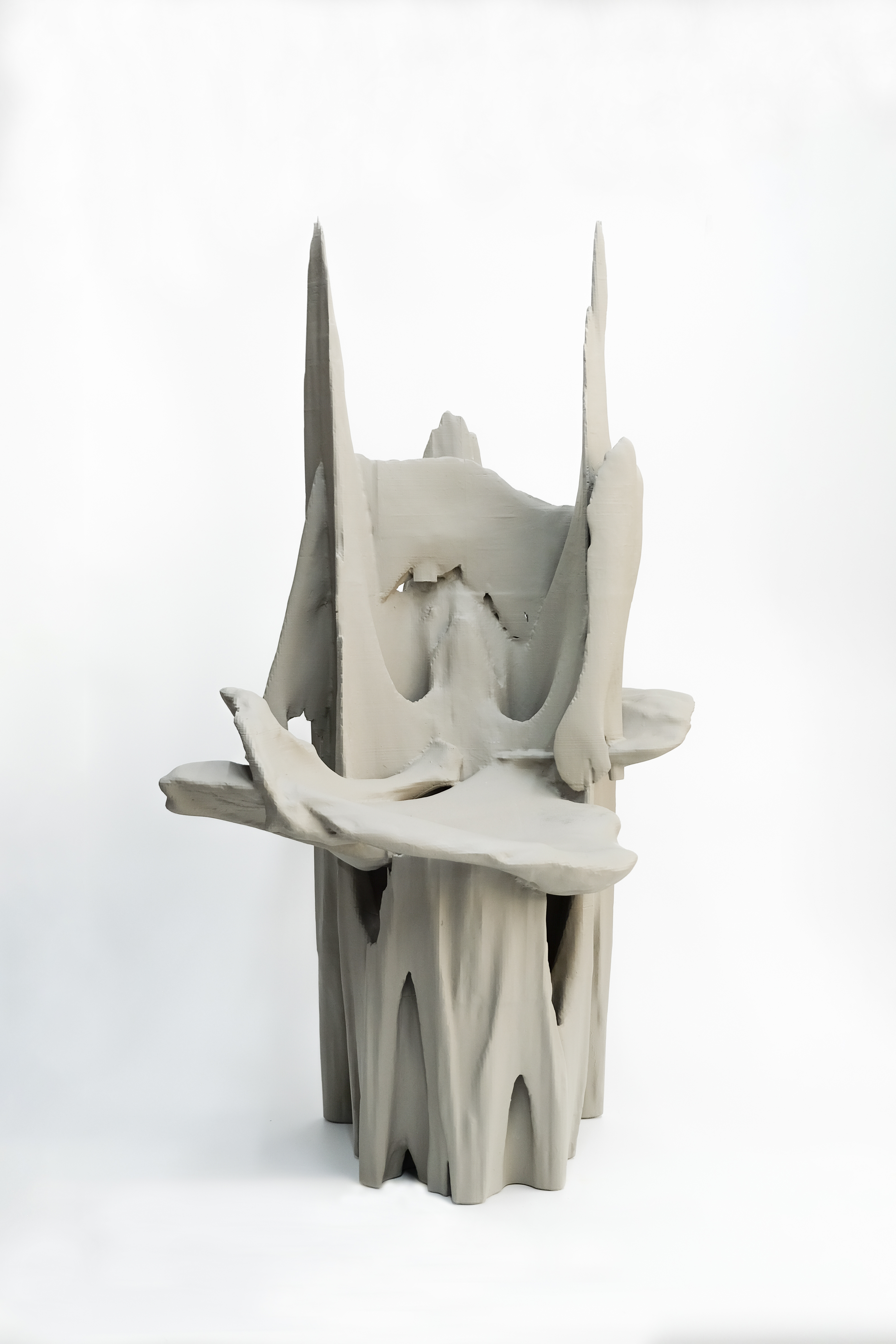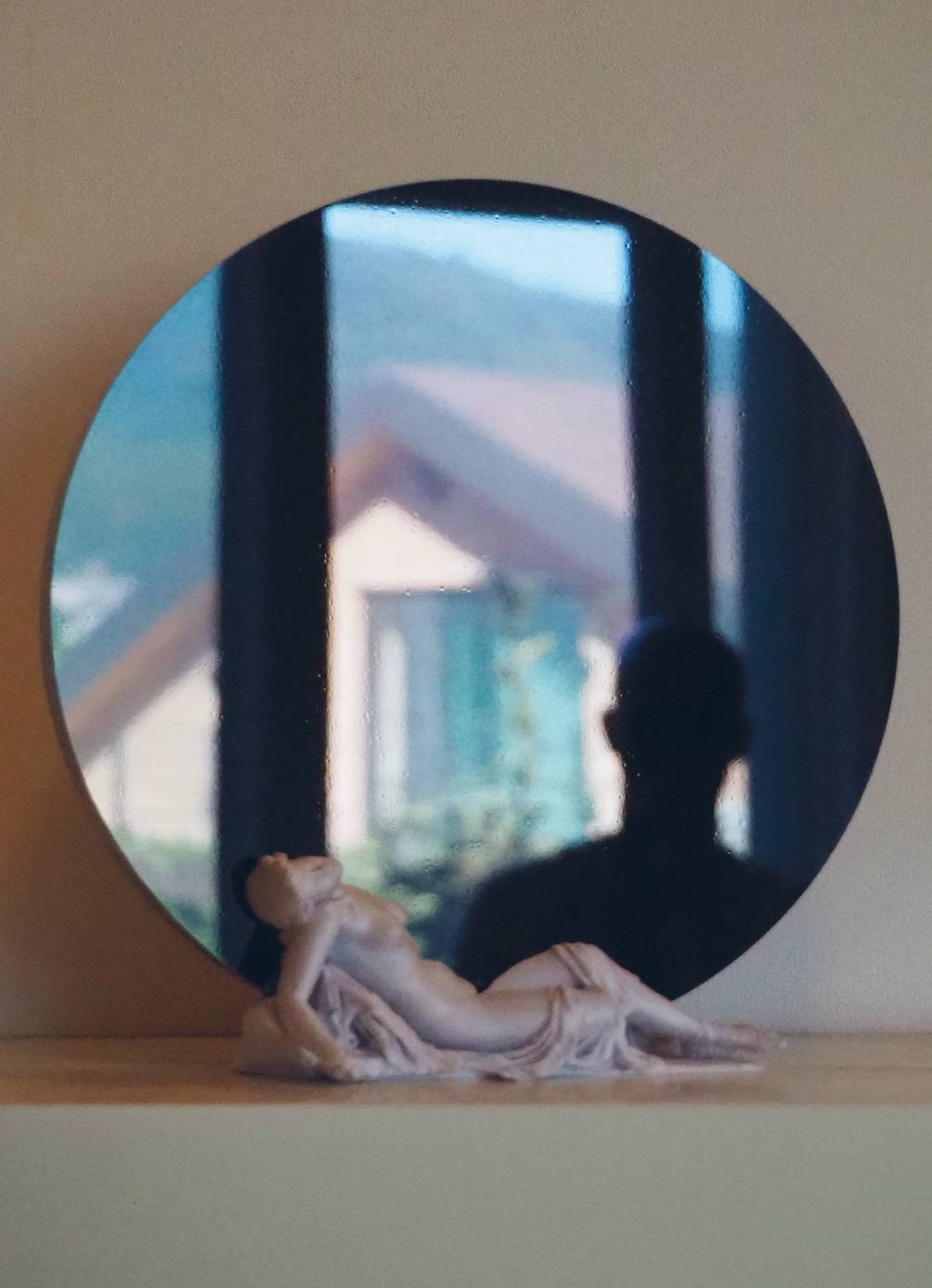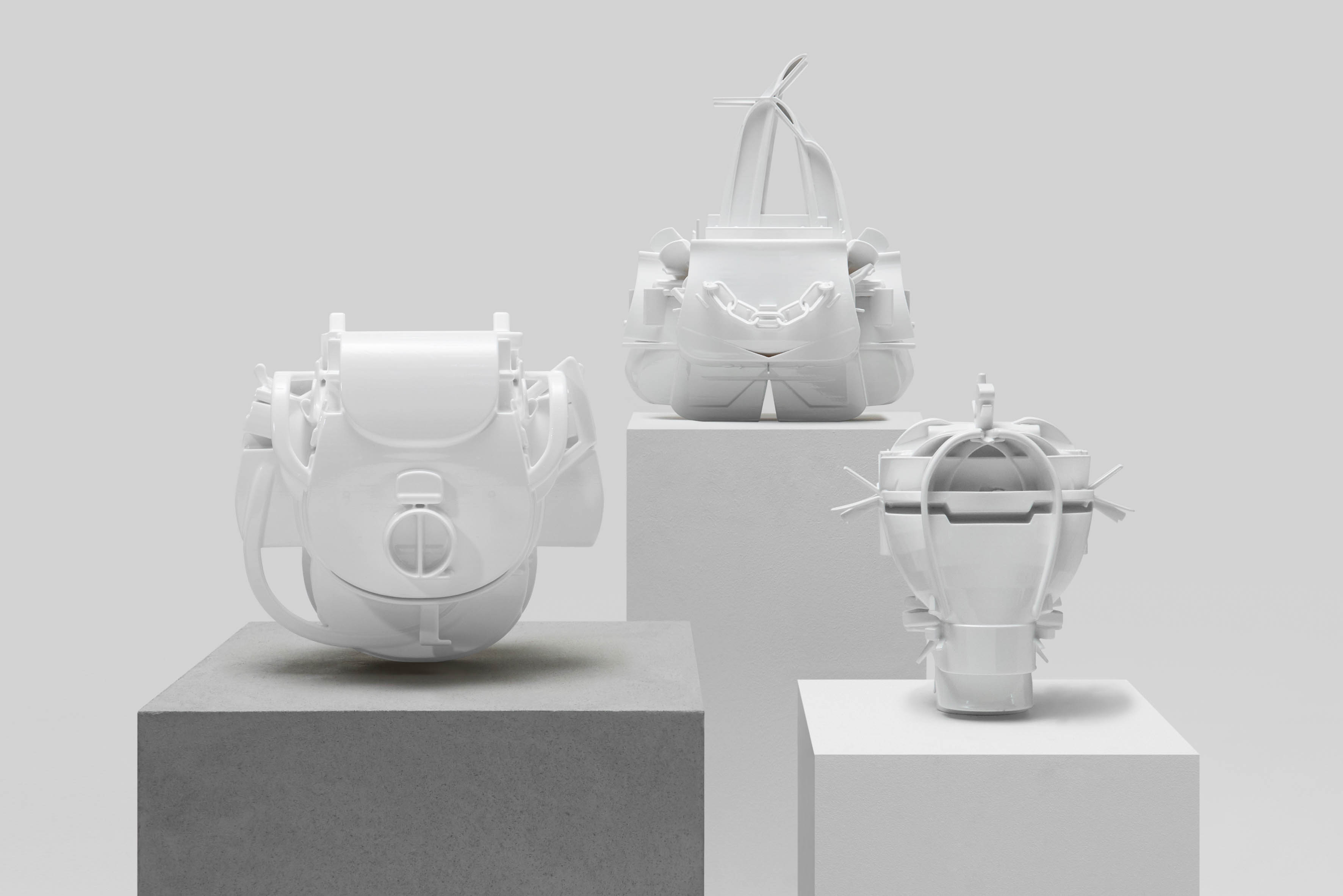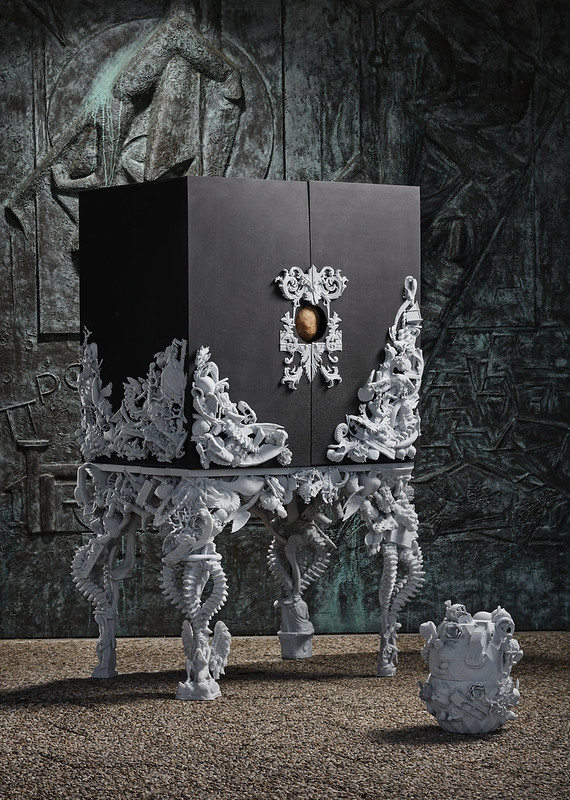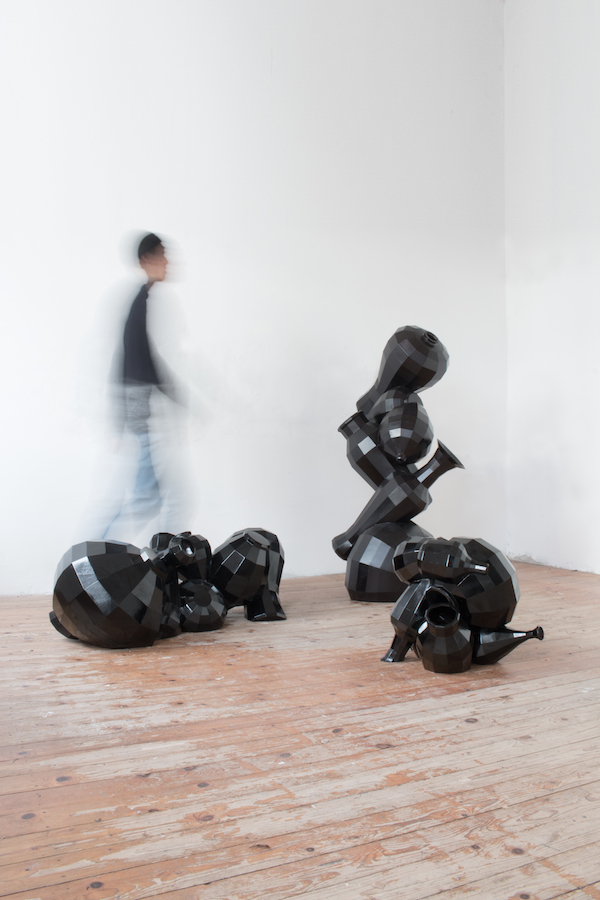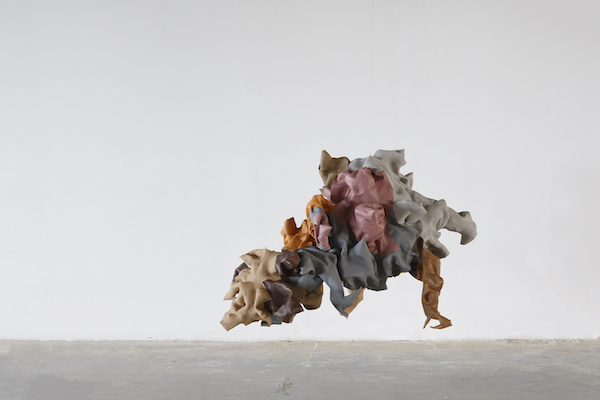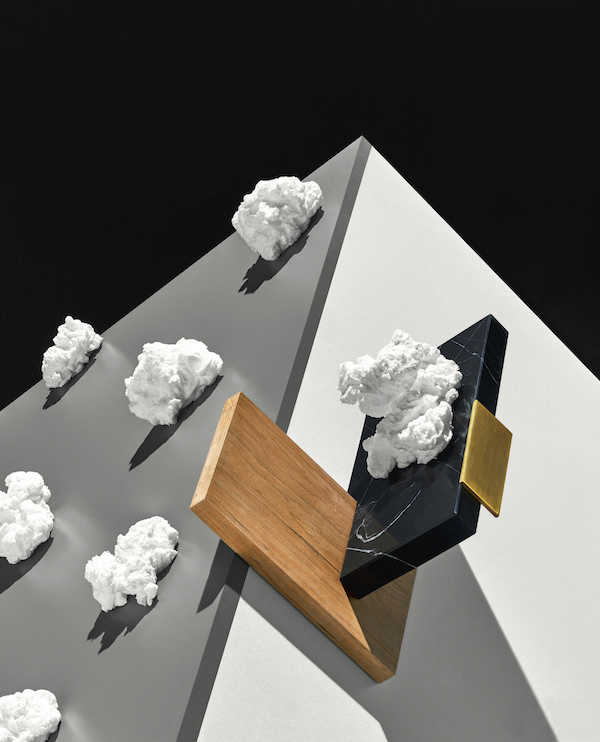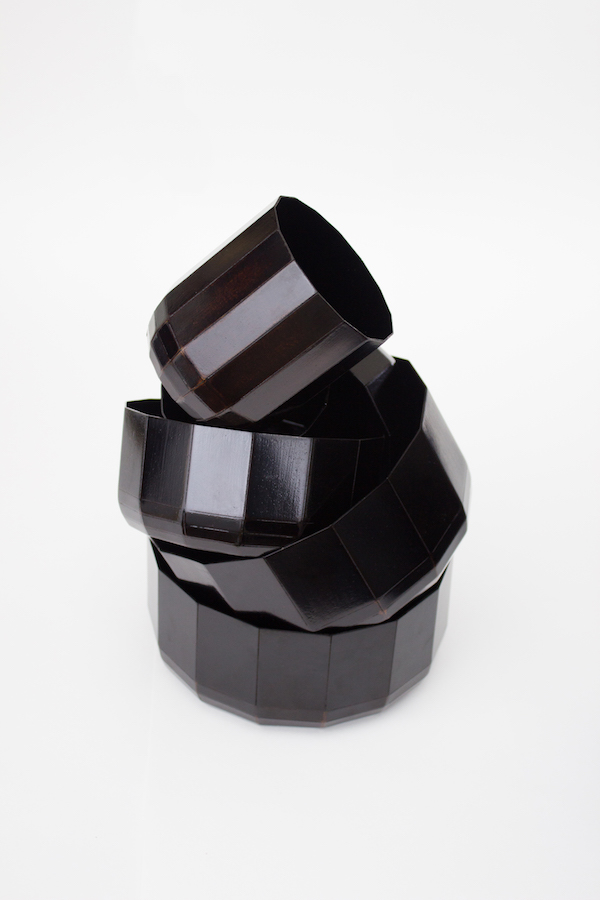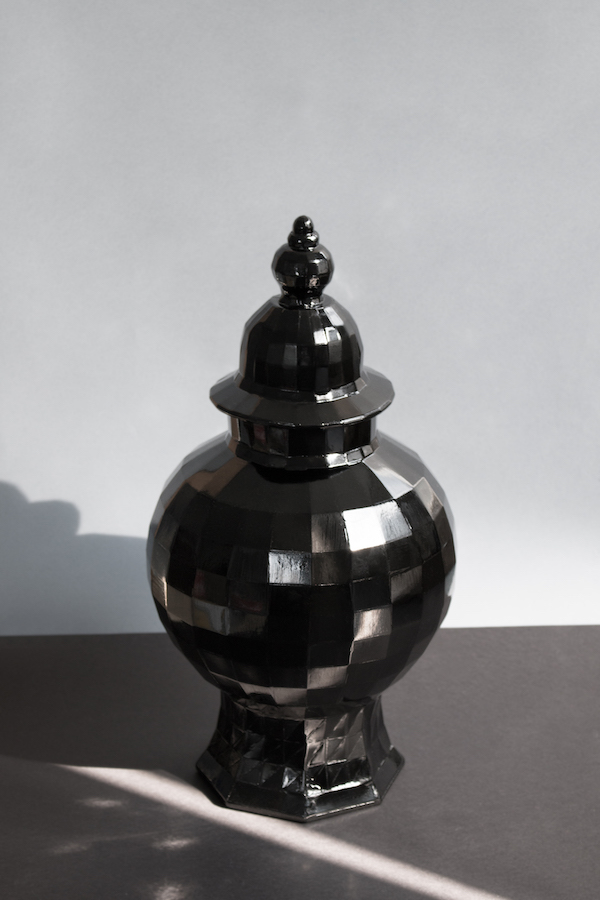
21g
Urushi (Natural lacquer), Paper
2016
11 Pieces (1 Set)
Urushi (Natural lacquer), Paper
2016
11 Pieces (1 Set)
Ott-chil is one of the most delicate and unique traditional crafts of Korea. It is a technique that uses the natural sap harvested from the lacquer tree to coat and finish the surfaces of wood and other materials. When the trunk or branch of a lacquer tree is wounded, the tree secretes a special substance to protect itself. Collecting this sap with precision, purifying it, and preparing it for use is the starting point of Ott-chil. Because this process is highly demanding and requires great skill and experience, it has traditionally been carried out only by master artisans. Lacquer can be applied not only to wood but also to metal, paper, fabric, and ceramics. The finished surface is remarkably strong and durable, resistant to moisture, water, and decay. It also has antibacterial and human-friendly properties, which made it a prized material for fine tableware, ritual vessels, and high-end furniture throughout Korean history. More than a functional finish, Ott-chil represents a cultural symbol that embodies Korean aesthetics and philosophy of life.
Yet in contemporary society, Ott-chil is gradually losing its place. Mass production systems, the prevalence of synthetic materials, and the modern preference for speed and convenience have distanced this labor-intensive, time-consuming craft from everyday life. Especially in Korea, where the pace of urbanized, industrialized life has accelerated, the temporal values and artisanal spirit of traditional crafts often appear at odds with today’s consumer culture. As a result, lacquerwork is now confined to limited uses, such as luxury crafts or the restoration of cultural properties. An even more urgent problem is that master lacquer artisans are aging, with few successors to carry on their skills. As one generation of masters retires or struggles to sustain their livelihood, the very knowledge of Ott-chil faces the risk of extinction. This does not merely mean the loss of a technique but the disappearance of a vital strand of Korean cultural heritage.
This project began as both a response to this crisis and an homage to the artisans who have devoted their lives and souls to lacquerwork. I traveled across Korea to meet lacquer masters, to observe their processes firsthand, and to learn from their wisdom, skills, and spirit. What I encountered was that Ott-chil is not simply a surface-finishing method but a medium in which nature, humanity, time, and labor converge. The artisans carefully refine the sap, apply it in numerous thin coats, allow each layer to dry, and ultimately achieve a surface of deep, lustrous sheen. The process is never efficient, yet the layered passage of time embedded in each work yields a depth and vitality that no machine-made product could reproduce. From this, I began to reflect anew on the contemporary significance and potential of lacquer.
In my project, I deliberately departed from the traditional use of wood and instead chose paper as the material for lacquer application. Paper is inherently light and fragile, vulnerable to water and fire. But when treated with lacquer, it undergoes a complete transformation: it remains lightweight but gains resilience, waterproof qualities, antibacterial protection, and a refined, elegant sheen. I sought to develop lacquered paper as a new material for tableware. This was both a reinterpretation of traditional techniques within a modern context and an exploration of the gap between opposites: heavy and light, strong and fragile, luxury and everyday. Lacquered paper maintains the prestige and ritual associations of traditional lacquer while transforming into a material that can also serve as functional, everyday design.
This new tableware is not an object meant to be appreciated solely with the eyes. Because of the nature of paper, viewers cannot easily imagine its weight or texture by sight alone. Yet when touched and used directly, the preconception of paper collapses, and the user instead encounters the firmness, refinement, lightness, and practicality conferred by lacquer. Through this tactile experience, audiences come to perceive firsthand the intersection of tradition and modernity, of material and technique, of function and aesthetics. My intent is to show that lacquer is not merely a legacy of the past but a craft that can be reborn into contemporary life with renewed vitality.
Ultimately, this project serves both as a lament for a vanishing tradition and as a proposal to extend it into the present and future. Lacquer is not simply a surface-protective coating but a transformative agent that reshapes materials and grants them new value. By applying lacquer to paper, I sought to rediscover that transformative power and, in doing so, build a bridge between tradition and modernity. Through these lacquered paper tableware pieces, the audience not only experiences the beauty and durability of lacquer but is also invited to reflect on how traditional crafts can be re-contextualized for our own era. This project is both a tribute to the lives and spirits of lacquer artisans and a modest attempt to reintroduce Ott-chil—this cultural heritage—into the fabric of everyday life today.
-
옻칠(Ott-chil)은 한국의 전통 공예 기법 가운데서도 가장 섬세하고 독특한 방법 중 하나로, 옻나무에서 채취한 천연 수액을 이용하여 목재나 기타 재료의 표면을 마감하는 기술을 말한다. 옻나무는 줄기나 가지에 상처가 생기면 이를 보호하기 위해 특별한 액체를 분비하는데, 바로 이 옻액을 정교하게 채취하여 정제한 뒤 사용하는 것이 옻칠의 시작이다. 이 과정은 매우 까다롭고 많은 경험과 숙련을 필요로 하기 때문에 오직 장인들만이 감당할 수 있는 영역으로 여겨져 왔다. 옻칠은 나무뿐 아니라 금속, 종이, 천, 도자기 등 거의 모든 재료에 적용할 수 있으며, 마감된 표면은 놀라울 정도로 단단하고 내구성이 강하다. 습기에 강하고 방수 효과가 있으며, 항균 기능과 인체 친화적 특성을 동시에 지니고 있어, 한국에서는 오랫동안 귀한 식기와 의례용 도구, 고급 가구의 재료로 사용되어 왔다. 옻칠은 단순히 기능적 마감재가 아니라 한국인의 미적 감각과 생활 철학을 담아내는 문화적 기호였다.
그러나 현대 사회에서 옻칠은 점차 설 자리를 잃어가고 있다. 대량 생산 체계와 합성 소재의 보급, 빠르고 편리한 생활 방식을 선호하는 현대인의 취향은 오랜 시간과 정성을 요구하는 옻칠을 일상에서 멀어지게 만들었다. 한국 사회는 특히 산업화와 도시화를 거치며 생활의 속도가 점점 더 빨라졌고, 전통 공예의 시간성과 장인정신은 오늘날의 소비문화와는 상반되는 가치로 여겨지기 시작했다. 이로 인해 옻칠은 특정한 용도나 고급 공예품, 문화재 복원 영역에서만 제한적으로 사용되는 상황에 놓여 있다. 더 큰 문제는 옻칠 장인들이 고령화되면서 후계자가 부족하다는 점이다. 한 세대를 이어온 장인들이 은퇴하거나 생계를 유지하기 어려운 상황에 놓이면서, 옻칠 기술 자체가 사라질 위기에 처해 있다. 이는 단순히 기술 하나의 소멸이 아니라, 한국 전통 문화의 중요한 축이 사라질 수 있음을 의미한다.
이 프로젝트는 바로 이러한 위기 상황에 대한 응답이자, 오랜 세월 옻칠에 삶과 영혼을 바쳐온 장인들에 대한 헌사로 출발하였다. 나는 한국 각지에서 옻칠 장인들을 만나 그들의 작업 과정을 직접 보고 배우며, 그 속에 담긴 지혜와 기술, 그리고 장인 정신의 본질을 이해하고자 했다. 옻칠은 단순한 표면 마감 기술이 아니라, 자연과 인간, 시간과 노동이 교차하는 장치였다. 장인들은 옻나무에서 얻은 수액을 정성스럽게 정제하고, 수십 번에 걸쳐 얇게 칠하고 말리며, 마침내 매끄럽고 깊은 광택을 얻는다. 그 과정은 결코 효율적이지 않지만, 한 겹 한 겹의 시간이 쌓이며 만들어내는 결과물은 기계적 생산으로는 결코 흉내 낼 수 없는 깊이와 생명력을 담아낸다. 나는 이러한 과정에서 옻칠이 지닌 현대적 의미와 가능성을 다시금 고민하게 되었다.
내 프로젝트에서는 전통적으로 사용되어 온 나무가 아니라 종이를 재료로 삼아 옻칠을 적용하였다. 종이는 원래 가볍고 약한 재질로, 물과 불에 취약하다. 그러나 종이에 옻칠을 더하면 전혀 다른 성질을 띠게 된다. 종이는 여전히 가볍지만 내구성이 강화되고 방수와 항균 효과까지 갖추게 되며, 표면은 고급스러운 광택을 머금는다. 나는 이 점에 주목하여 새로운 테이블웨어 소재로서 옻칠 종이를 개발하고자 했다. 이는 전통적 기법을 현대적 생활 맥락 속에 재해석한 시도였다. 나의 관심은 무겁고 강한 재료와 가볍고 약한 재료 사이의 간극, 고급스러움과 일상성 사이의 경계에서 새로운 가능성을 탐구하는 데 있다. 옻칠 종이는 전통적인 고급성과 의례적 성격을 유지하면서도, 일상적인 삶 속에서 가볍고 실용적으로 사용할 수 있는 재료로 변모할 수 있다.
이 새로운 테이블웨어는 단순히 시각적으로만 감상되는 오브제가 아니다. 종이라는 재료의 본질 때문에 사람들은 눈으로 보기만 해서는 그 무게나 질감을 쉽게 상상하기 어렵다. 그러나 실제로 손에 들어 사용해 보면, 종이라는 선입견을 무너뜨리고 옻칠이 부여한 견고함과 고급스러움, 가벼움과 실용성을 동시에 체감하게 된다. 관람자와 사용자는 그 경험을 통해 전통과 현대, 재료와 기술, 기능과 미학이 교차하는 지점을 몸소 느끼게 된다. 나는 이를 통해 옻칠이 단순히 과거의 유산으로 머무는 것이 아니라, 현대적 맥락 속에서도 새롭게 재탄생할 수 있음을 보여주고 싶었다.
결국 이 프로젝트는 사라져가는 전통 기술에 대한 애도이자, 그것을 현재와 미래로 확장하려는 제안이다. 옻칠은 단순히 표면을 보호하는 기술이 아니라, 재료를 변모시키고 새로운 가치를 부여하는 힘을 지닌다. 나는 옻칠이 가진 이러한 힘을 종이라는 재료 위에서 다시 발견하고, 이를 통해 전통과 현대를 잇는 다리를 놓고자 했다. 관람자는 이 테이블웨어를 통해 단순히 옻칠의 아름다움과 내구성을 경험하는 것을 넘어, 우리 시대에 전통 공예가 어떤 방식으로 재맥락화될 수 있는지를 사유하게 될 것이다. 이 프로젝트는 옻칠 장인들의 삶과 정신에 바치는 헌사인 동시에, 옻칠이라는 문화적 유산을 오늘날의 일상 속에 다시 불러들이려는 작은 시도이다.
* Nominated Melkweg Award 2016

